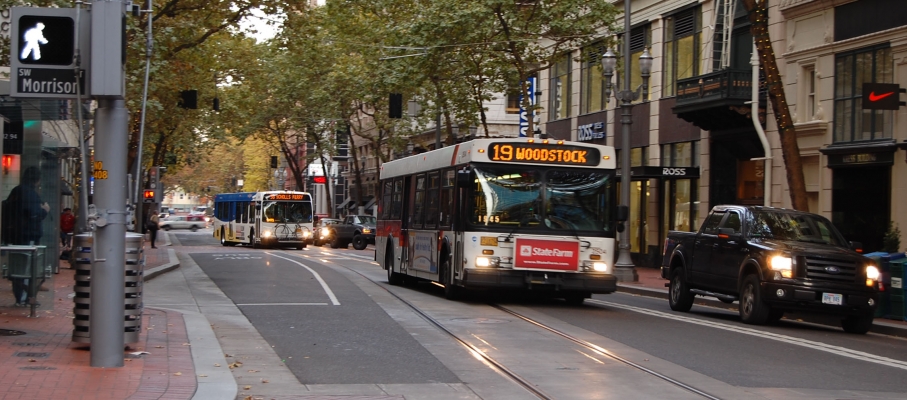Transit Data Offers New Way of Evaluating Roadway Reallocation Projects

In the last decade there has been a national trend toward projects that involve roadway space reallocation across modes. "Road Diets," in which one or more travel lanes are removed to make space for wider and safer bicycle and pedestrian space, is a common type of roadway reallocation.
A new NITC report by Miguel Figliozzi and Travis Glick of Portland State University offers a new methodology for doing before-and-after studies of these projects using high-resolution transit data. The data used in this project was supplied by TriMet, the transit provider for the Portland, Oregon metropolitan region.
Typically, before-and-after studies of roadway changes have used data on vehicle speeds to determine effects of change, without considering transit. By using datasets from transit providers, researchers can measure transit and also general traffic speed, so the data serve both purposes.
"This is a new methodology; something that no one has done, and it's applicable to many future projects," Figliozzi said.
Many transit agencies, particularly those in larger cities, have high-resolution data available. TriMet has been collecting high-resolution data since around 2010. To test the method, Figliozzi and Glick used TriMet's data to conduct before-and-after studies of two road diets in Portland: Northeast 16th Avenue and Northeast Lombard Street. The strategy and formulas developed in this project were able to quantify changes in transit speeds and travel times on both corridors.
- Recent Lecture: Travis Glick, Portland State University PhD student and co-investigator, shared a presentation on this methodology this past October. (Watch the video)
The methodology developed and implemented in this project can measure the efficacy of road diets with solid before-and-after evidence. Traditionally, before-and-after studies have assessed the effects of roadway changes on auto travel speeds. Examining the question through the lens of transit allows practitioners to gain a more holistic understanding of how roadway changes affect all road users.
To learn more about this and other research from the NITC program, sign up for our newsletter.
The National Institute for Transportation and Communities (NITC), one of five U.S. Department of Transportation national university transportation centers, is a program of the Transportation Research and Education Center (TREC) at Portland State University. The NITC program is a Portland State-led partnership with the University of Oregon, Oregon Institute of Technology, University of Utah and new partners University of Arizona and University of Texas at Arlington. We pursue our theme — improving mobility of people and goods to build strong communities — through research, education and technology transfer.
